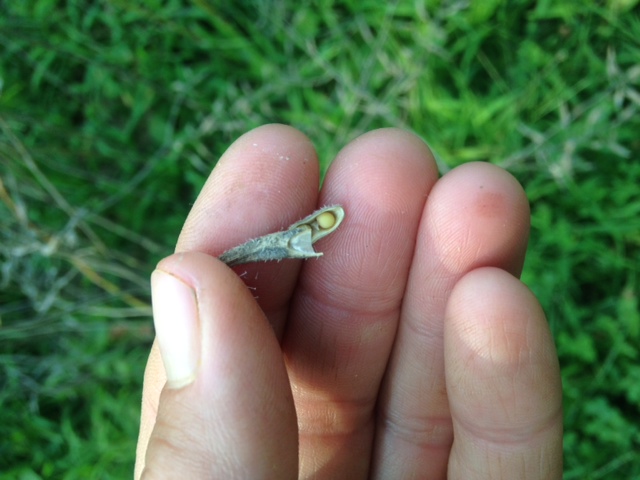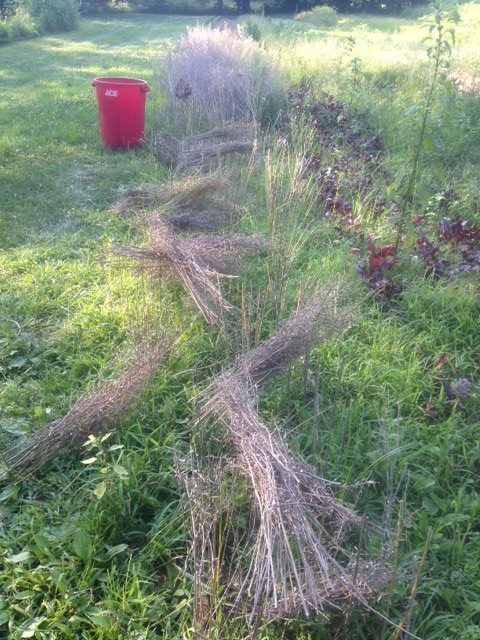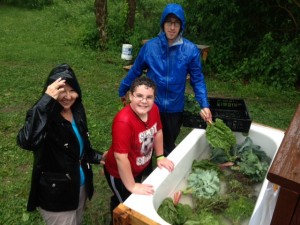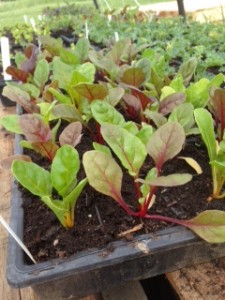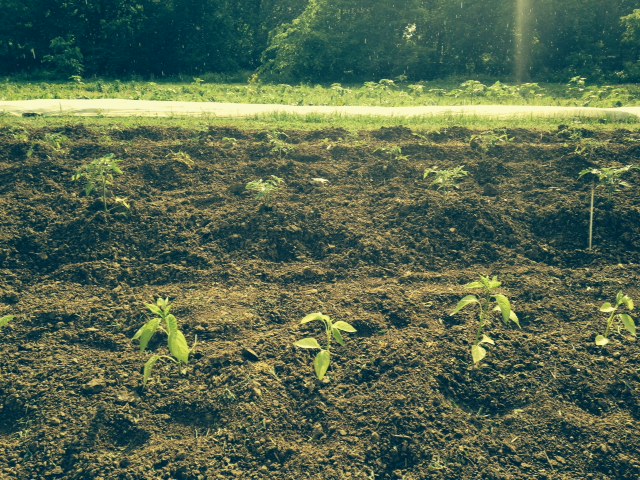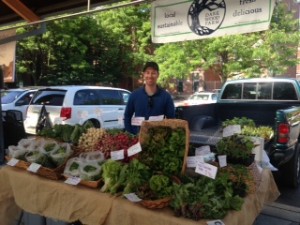My friend, Morgan, had Chris and me over for dinner last night, and she put in a special request that we bring over some heirloom tomatoes. I was happy to oblige; we have plenty of them at the moment, and we are excited to share them with our friends and family. I brought over several varieties and we taste tested at least three, all of which where juicy, dense, and sweet. Morg asked, “Why do heirlooms taste so much better?” and I thought y’all might have the same question, so here’s my answer in several parts:
Let’s start by discussing just what the heck makes a tomato (or any other vegetable, for that matter), an “heirloom.” Do any of you have an old piece of jewelry or antique passed down through your family? When I turned 15, my aunt, Jennifer, gave me a little gold ring that she had received on her 15th birthday from my great grandmother, Mutzi. In turn, Mutzi had received the ring on her 15th birthday from her father. That’s an heirloom. Something that has been passed down over the years through the generations of a family. Now, let’s shift the gears and talk about heirloom vegetables. In the days before seed catalogs, folks would save seeds from the myriad vegetables they were growing for fresh eating and preserving, and plant those saved seeds in subsequent year. In fact, a family could save the seed from their best, most flavorful, most vigorous and healthy plants, and by doing that every year, improve their vegetables’ taste, texture, and production at that specific location. Let’s fast forward to what agriculture looks like today. We now live in a world where vegetable production has converted from diverse backyard gardens to large-scale monocultures, meaning vast acreages of one crop, often picked by a machine instead of by a human hand. We also live in a world where we seldom walk out the back door, pick our vegetables, and eat them immediately. Instead, we go to the grocery store and buy vegetables that were picked at an unknown date, packed, and shipped some unknown number of miles away. For a vegetable to be “successful” in today’s agricultural world, it must maximize production per acre, be easy to pick by a machine, be easily washed and packed, resist bruising during shipping, sit stably on a shelf for an untold amount of time, be uniform in color, shape, and size so it displays nicely, and last for weeks in your refrigerator’s vegetable drawer. So, instead of seed that has been saved by families for flavor, ripeness, and vigor in a specific location, we now eat vegetables from seeds that were saved for uniformity, hardness (for shipping purposes), and shelf stability. Note that I did not include “flavor” in that list. To achieve these modern goals, people have done crazy things to seeds, including inserting genetic material from other life forms into the DNA of vegetables, making them genetically modified organisms, or GMOs.

Most vegetables develop flavor as they approach ripeness. This is especially the case with tomatoes. Ever eat one of those hard, white-in-the-center, tomatoes from the grocery store in January? They have absolutely no flavor because they were picked under-ripe to keep them hard for shipping. A tomato that is allowed to ripen on the vine has time to develop sugars, which cause the tomato to be soft to the touch, juicy when cut, fragrant, and sweet. The sugars also cause the tomato to rapidly decay and soften if you don’t eat them shortly after they are picked. A soft, sugary tomato does NOT travel well, and it certainly doesn’t travel well over thousands of miles. Really, the only way to get your hands on one of these babies is to grow them and pick them yourself or to buy them from someone growing them nearby. This is where your friendly, small-scale farmer comes into play. Small-scale farmers can pick tomatoes by hand, noting which are at their peak of ripeness, handle them gently, and deliver them to a market or to your doorstep in a short amount of time. Small-scale farmers can peddle even the ugliest of tomatoes, including cracked and crazy-looking tomatoes (as heirlooms often are), because they can talk with their customer one-on-one, describe the flavor, describe their growing practices, let you smell, touch, and even taste test the vegetables. Farmers that grow for wholesale simply can’t do this.

While I do have my great grandma’s heirloom ring, I don’t have any heirloom seeds that were passed down in my family. Luckily, there are a lot of small-scale growers out there, dutifully saving seeds from old heirloom varieties and sharing them with other farmers. This year, I ordered most of my seeds from Fedco, a seed co-op based in Maine, and Southern Exposure Seed Exchange, which is a network of growers that specialize in varieties that grow well in the Mid-Atlantic and Southeastern US. Through the hard work of these growers, many heirloom varieties live on and are available for growers like me – new farmers just getting started and in need of delicious locally-adapted varieties to grow for their friends, family, and neighbors.





